2-CYANOETHYLTRIETHOXYSILANE
Synonym(s):(2-Cyanoethyl)triethoxysilane
- CAS NO.:919-31-3
- Empirical Formula: C9H19NO3Si
- Molecular Weight: 217.34
- MDL number: MFCD00019851
- EINECS: 213-050-5
- SAFETY DATA SHEET (SDS)
- Update Date: 2024-12-18 14:08:52
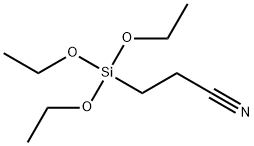
What is 2-CYANOETHYLTRIETHOXYSILANE?
The Uses of 2-CYANOETHYLTRIETHOXYSILANE
(2-Cyanoethyl)triethoxysilane is an ethoxylated silicate that has been used as a coating for aluminum and quartz.
What are the applications of Application
3-(Triethoxysilyl)propionitrile is an ethoxylated silicate that has been used as a coating for aluminum and quartz
General Description
3-(Triethoxysilyl)propionitrile (TESPN) is an organosilyl sol gel that can be used as a silane based coupling agent to improve the adhesion between metal-polymeric composite. It is non-toxic and cost efficient which makes it a suitable alternative to the existing chromate treatment of metals. It can be used in surface modification of silica based surfaces.
Flammability and Explosibility
Not classified
Properties of 2-CYANOETHYLTRIETHOXYSILANE
| Boiling point: | 224 °C (lit.) |
| Density | 0.979 g/mL at 25 °C (lit.) |
| vapor pressure | 1.9Pa at 20℃ |
| refractive index | n |
| Flash point: | 212 °F |
| form | liquid |
| color | Colorless to Almost colorless |
| Specific Gravity | 0.979 |
| Water Solubility | Hydrolyzes in water. |
| Hydrolytic Sensitivity | 7: reacts slowly with moisture/water |
| Sensitive | Moisture Sensitive |
| BRN | 1776392 |
| CAS DataBase Reference | 919-31-3(CAS DataBase Reference) |
| EPA Substance Registry System | Propanenitrile, 3-(triethoxysilyl)- (919-31-3) |
Safety information for 2-CYANOETHYLTRIETHOXYSILANE
| Signal word | Warning |
| Pictogram(s) |
 Exclamation Mark Irritant GHS07 |
| GHS Hazard Statements |
H315:Skin corrosion/irritation H319:Serious eye damage/eye irritation H335:Specific target organ toxicity, single exposure;Respiratory tract irritation |
| Precautionary Statement Codes |
P261:Avoid breathing dust/fume/gas/mist/vapours/spray. P264:Wash hands thoroughly after handling. P264:Wash skin thouroughly after handling. P271:Use only outdoors or in a well-ventilated area. P280:Wear protective gloves/protective clothing/eye protection/face protection. P302+P352:IF ON SKIN: wash with plenty of soap and water. P305+P351+P338:IF IN EYES: Rinse cautiously with water for several minutes. Remove contact lenses, if present and easy to do. Continuerinsing. |
Computed Descriptors for 2-CYANOETHYLTRIETHOXYSILANE
New Products
Tert-butyl bis(2-chloroethyl)carbamate 4-Methylphenylacetic acid N-Boc-D-alaninol N-BOC-D/L-ALANINOL 3-Morpholino-1-(4-nitrophenyl)-5,6-dihydropyridin- 2(1H)-one Furan-2,5-Dicarboxylic Acid Tropic acid DIETHYL AMINOMALONATE HYDROCHLORIDE 1,1’-CARBONYLDIIMIDAZOLE R-2-BENZYLOXY PROPIONIC ACID 1,1’-CARBONYLDI (1,2-4 TRIAZOLE) N-METHYL INDAZOLE-3-CARBOXYLIC ACID (2-Hydroxyphenyl)acetonitrile 4-Bromopyrazole 5-BROMO-2CYANO PYRIDINE 5,6-Dimethoxyindanone 5-broMo-2-chloro-N-cyclopentylpyriMidin-4-aMine 2-(Cyanocyclohexyl)acetic acid 4-methoxy-3,5-dinitropyridine 2-aminopropyl benzoate hydrochloride 1-(4-(aminomethyl)benzyl)urea hydrochloride diethyl 2-(2-((tertbutoxycarbonyl)amino) ethyl)malonate tert-butyl 4- (ureidomethyl)benzylcarbamate Ethyl-2-chloro((4-methoxyphenyl)hydrazono)acetateRelated products of tetrahydrofuran

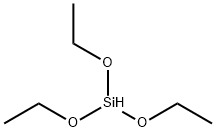
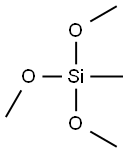
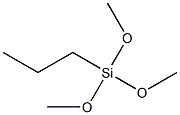

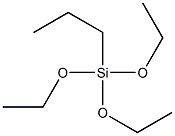


You may like
-
 2-Cyanoethyltriethoxysilane CAS 919-31-3View Details
2-Cyanoethyltriethoxysilane CAS 919-31-3View Details
919-31-3 -
 (2-Cyanoethyl)triethoxysilane CAS 919-31-3View Details
(2-Cyanoethyl)triethoxysilane CAS 919-31-3View Details
919-31-3 -
 3-(Triethoxysilyl)propionitrile CAS 919-31-3View Details
3-(Triethoxysilyl)propionitrile CAS 919-31-3View Details
919-31-3 -
 1975-50-4 98%View Details
1975-50-4 98%View Details
1975-50-4 -
 2-HYDROXY BENZYL ALCOHOL 98%View Details
2-HYDROXY BENZYL ALCOHOL 98%View Details
90-01-7 -
 14714-50-2 (2-Hydroxyphenyl)acetonitrile 98+View Details
14714-50-2 (2-Hydroxyphenyl)acetonitrile 98+View Details
14714-50-2 -
 118753-70-1 98+View Details
118753-70-1 98+View Details
118753-70-1 -
 733039-20-8 5-broMo-2-chloro-N-cyclopentylpyriMidin-4-aMine 98+View Details
733039-20-8 5-broMo-2-chloro-N-cyclopentylpyriMidin-4-aMine 98+View Details
733039-20-8
Statement: All products displayed on this website are only used for non medical purposes such as industrial applications or scientific research, and cannot be used for clinical diagnosis or treatment of humans or animals. They are not medicinal or edible.